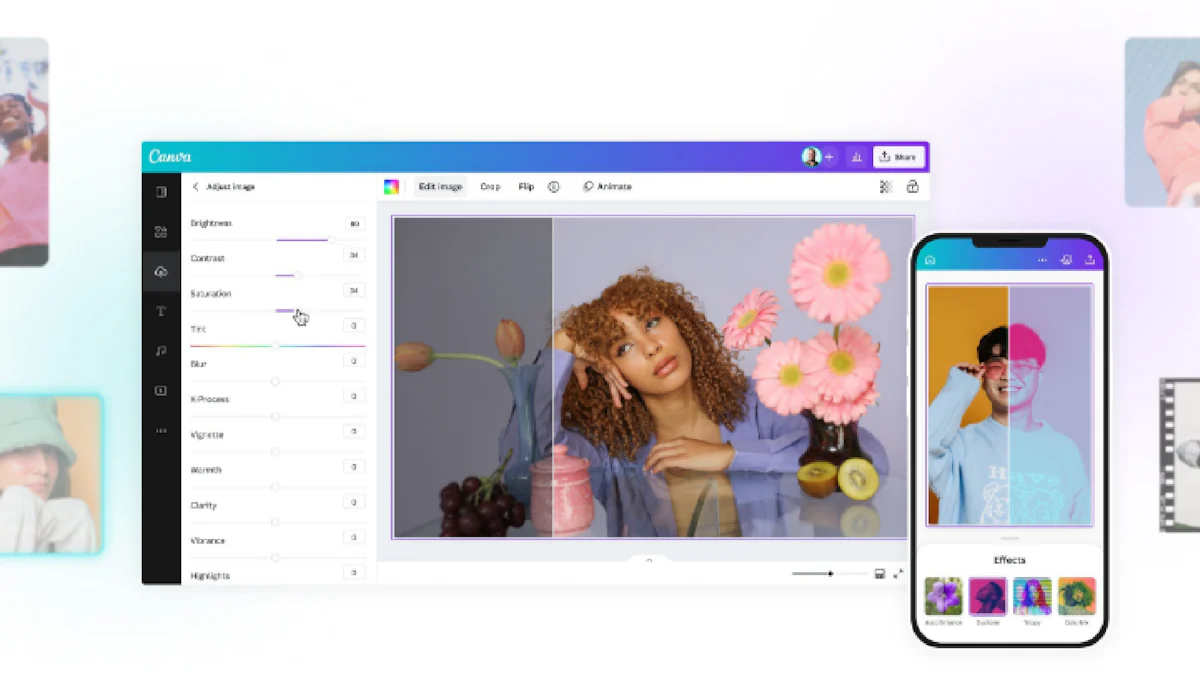
AI design software is essential for creative professionals, offering a significant advantage in various design scenarios. With the right AI logo generator, designers can create professional graphic designs effortlessly. The diversity of AI design tools available caters to different needs, making them a must-have for any designer. Adobe’s Creative Cloud app provides a wide range of options, while AI’s advantages are evident in the seamless integration and efficiency it offers. AMD Radeon Pro and Intel Core deliver powerful support for design tasks, enhancing the performance of AI design software. The British Virgin Islands and Republic regions have seen a rise in demand for such innovative tools. Mac users benefit from compatibility with various platforms and operating systems, ensuring a smooth design experience. The library of resources within Creative Bloq helps designers make informed choices, while pricing varies to suit different budgets. The AMD Radeon Pro GPU further enhances performance, allowing designers to explore the islands of creativity with the right AI design software.
Vector Graphics Software

Vector graphics software plays a crucial role in the world of design. These tools help you create scalable images that maintain quality at any size. Let’s dive into two popular options that can enhance your design projects.
Adobe Illustrator
Adobe Illustrator stands out as a top choice for vector graphics. This design software offers powerful features that cater to both beginners and professionals.
Key Features
Adobe Illustrator provides a wide range of tools for creating intricate designs. You can use the pen tool for precise paths, while the shape builder tool simplifies complex shapes. The software supports multiple artboards, allowing you to work on several designs simultaneously. Adobe Illustrator software integrates seamlessly with other Adobe Creative Cloud apps, streamlining your workflow.
Use Cases
Adobe Illustrator excels in creating logos, icons, and illustrations. You can also use it for designing posters, business cards, and web graphics. The software’s versatility makes it ideal for various design projects. Whether you’re working on branding or digital art, Adobe Illustrator has you covered.
Pros and Cons
Adobe Illustrator offers numerous advantages. The software provides advanced tools for professional-grade designs. Frequent updates ensure you stay on top of graphic design trends. However, the learning curve can be steep for newcomers. The subscription model might not suit everyone’s budget. Despite these drawbacks, Adobe Illustrator remains a favorite among designers.
CorelDRAW
CorelDRAW serves as another excellent option for vector graphics. This design software combines user-friendly features with robust capabilities.
Key Features
CorelDRAW offers intuitive tools for creating stunning vector graphics. The software includes a live sketch tool, which captures hand-drawn strokes with precision. You can also enjoy advanced typography options and color management tools. CorelDRAW’s interface is customizable, allowing you to tailor the workspace to your needs.
Use Cases
CorelDRAW is perfect for creating marketing materials, such as brochures and flyers. You can also use it for fashion design and technical illustrations. The software’s versatility makes it suitable for various industries. CorelDRAW helps you stay ahead of graphic design trends with ease.
Pros and Cons
CorelDRAW boasts several benefits. The software’s user-friendly interface makes it accessible to beginners. CorelDRAW’s one-time purchase option appeals to budget-conscious users. However, some users might find the feature set less extensive than Adobe Illustrator. Despite this, CorelDRAW remains a popular choice for many designers.
Raster Graphics Software
Raster graphics software lets you work with pixel-based images. These tools are perfect for photo editing and digital painting. Let’s explore two popular options that can elevate your design projects.
Adobe Photoshop
Adobe Photoshop stands as a leader in raster graphics software. The program offers a wide array of features that cater to both beginners and seasoned professionals.
Key Features
Adobe Photoshop provides tools for photo retouching, compositing, and digital painting. The software includes layers and masks for non-destructive editing. You can use filters and effects to enhance images creatively. Photoshop supports various file formats, making it versatile for different projects.
Use Cases
Adobe Photoshop excels in photo editing and digital art creation. You can use the software for designing web graphics and print materials. Photoshop is ideal for creating detailed artwork and realistic image edits. The program’s flexibility makes it suitable for a range of creative tasks.
Pros and Cons
Adobe Photoshop offers many advantages. The software provides powerful tools for professional-grade edits. Frequent updates keep the program current with industry trends. However, the learning curve can be steep for new users. The subscription model may not fit every budget. Despite these challenges, Adobe Photoshop remains a favorite among designers.
GIMP
GIMP serves as a strong alternative for raster graphics editing. The program combines user-friendly features with robust capabilities.
Key Features
GIMP offers tools for photo manipulation and graphic design. The software includes layers, masks, and customizable brushes. You can enjoy advanced color correction and transformation tools. GIMP supports plugins, allowing you to extend its functionality.
Use Cases
GIMP is perfect for photo retouching and graphic design projects. You can use the software for creating web graphics and digital art. The program’s open-source nature makes it accessible to everyone. GIMP helps you achieve professional results without the cost.
Pros and Cons
GIMP boasts several benefits. The software’s open-source status means it’s free to use. GIMP’s community support provides resources and tutorials. Some users might find the interface less intuitive than Photoshop. Despite this, GIMP remains a popular choice for many creatives.
3D Design Software

3D design software opens up a world of possibilities for creative professionals. You can create stunning animations, models, and visual effects. Let’s explore two popular options that can elevate your 3D design projects.
Blender
Blender offers a comprehensive suite of tools for 3D design. This open-source software attracts both beginners and experienced designers.
Key Features
Blender provides a wide range of features for 3D modeling, animation, and rendering. The software includes a powerful sculpting toolset, allowing you to create detailed models. You can use the built-in compositor for post-processing effects. Blender supports a variety of file formats, making it versatile for different projects.
Use Cases
Blender excels in creating animations, visual effects, and 3D printed models. You can use the software for game development and architectural visualization. Blender’s flexibility makes it suitable for a range of creative tasks. The program’s open-source nature ensures accessibility for everyone.
Pros and Cons
Blender offers numerous advantages. The software’s open-source status means it’s free to use. Blender’s community support provides resources and tutorials. Some users might find the interface complex at first. Despite this, Blender remains a popular choice for many creatives.
Autodesk Maya
Autodesk Maya stands as a leader in 3D design software. The program offers advanced features that cater to professional designers.
Key Features
Autodesk Maya provides tools for 3D modeling, animation, and simulation. The software includes a robust set of rigging tools for character animation. You can use the Arnold renderer for high-quality visual effects. Autodesk Maya supports various file formats, ensuring compatibility with other software.
Use Cases
Autodesk Maya excels in creating animations, films, and video games. You can use the software for visual effects and virtual reality projects. Autodesk Maya’s versatility makes it ideal for various industries. The program’s advanced features ensure professional results.
Pros and Cons
Autodesk Maya offers many advantages. The software provides powerful tools for professional-grade designs. Frequent updates keep the program current with industry trends. Some users might find the learning curve steep. The subscription model may not fit every budget. Despite these challenges, Autodesk Maya remains a favorite among designers.
UI/UX Design Software
Sketch
Key Features
Sketch offers a range of features tailored for UI/UX design. The software provides vector editing tools that allow for precision in design. Symbols and reusable elements speed up the workflow. Sketch supports plugins, which extend functionality and integrate with other tools. The interface is clean and intuitive, making navigation easy.
Use Cases
Designers use Sketch for creating user interfaces and user experiences. The software excels in designing mobile apps and websites. Sketch is perfect for prototyping and wireframing. The tool helps in visualizing design concepts quickly. Teams often collaborate using Sketch for consistent design systems.
Pros and Cons
Sketch provides many benefits for designers. The software’s simplicity makes it accessible for beginners. Sketch’s plugin ecosystem enhances its capabilities. However, Sketch is only available on macOS, limiting its accessibility. Some users may find the lack of certain features challenging. Despite these issues, Sketch remains a popular choice for UI/UX designers.
Figma
Key Features
Figma stands out with its collaborative design features. The software allows multiple users to work on a project simultaneously. Figma offers vector networks for flexible design creation. The tool supports real-time feedback and comments. Figma’s cloud-based nature ensures easy access from anywhere.
Use Cases
Designers use Figma for creating interactive prototypes and interfaces. The software is ideal for web and app design projects. Figma facilitates team collaboration and design consistency. The tool helps in building design systems and style guides. Figma’s versatility suits various design workflows.
Pros and Cons
Figma offers several advantages for design teams. The software’s collaborative features enhance teamwork. Figma’s cross-platform availability increases accessibility. However, some users may experience performance issues with large files. The learning curve can be steep for new users. Despite these challenges, Figma remains a favorite among UI/UX professionals.
Free Design Software
Free design software offers a fantastic opportunity for anyone looking to explore creative possibilities without breaking the bank. These tools provide powerful graphic design capabilities that cater to various needs. Let’s dive into some popular free graphic design software options.
Inkscape
Key Features
Inkscape stands out as a robust free graphic design tool. It offers vector editing capabilities, allowing you to create scalable images. Inkscape supports SVG file format, which is essential for web graphics. The software includes a wide range of drawing tools and path operations. Inkscape’s open-source nature means constant updates and community support.
Use Cases
Designers use Inkscape for creating logos, illustrations, and web graphics. The software excels in projects requiring precision and scalability. Inkscape is perfect for designers who want to experiment with vector art. The tool helps in learning graphic design basics without cost barriers.
Pros and Cons
Inkscape provides several advantages. The software is free to use, making it accessible to everyone. Inkscape’s community offers tutorials and resources for beginners. Some users may find the interface less intuitive than paid alternatives. Despite this, Inkscape remains a popular graphic design software choice for many creatives.
Canva
Key Features
Canva offers a user-friendly platform for creating stunning designs. The software provides templates for various design scenarios, from social media posts to business presentations. Canva includes drag-and-drop functionality, making design easy for beginners. The tool supports collaboration, allowing teams to work together seamlessly.
Use Cases
Designers create website designs, marketing materials, and presentation designs using Canva. The software is ideal for quick and professional-looking graphics. Canva suits both personal and business projects. The tool helps in creating visually appealing content without needing advanced skills.
Pros and Cons
Canva offers numerous benefits. The software’s intuitive interface makes it easy to use. Canva’s free version provides plenty of features for basic design needs. Some advanced features require a Pro subscription. Despite this, Canva remains a go-to choice for many designers.
AILOGOCREATOR
AI-generated logos
AILOGOCREATOR revolutionizes logo creation with AI technology. The software generates unique logos tailored to your business needs. AILOGOCREATOR offers a vast array of creative options to choose from. The AI design process ensures quick and efficient results.
Advantage
AILOGOCREATOR provides significant advantages for businesses. The software simplifies the logo design process, saving time and effort. AILOGOCREATOR’s AI technology ensures high-quality designs. The tool helps businesses stand out in competitive markets.
Peculiarity
AILOGOCREATOR’s peculiarity lies in its AI-driven approach. The software offers a unique experience by combining creativity with technology. AILOGOCREATOR allows users to explore innovative design possibilities. The tool injects vitality into your creative endeavors with AI advantages.
Choosing the right design software matters a lot. The right tools can make your work easier and more creative. Think about what you need and what you like. Different software offers different features. Try out several options to see what fits best. Experimenting helps you find what works for your style. Remember, the perfect tool for someone else might not be perfect for you. Your creativity deserves the best support. Keep exploring until you find the right match. Happy designing!

CommentsTake the first comment